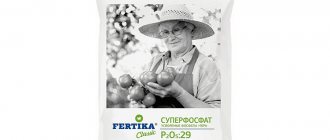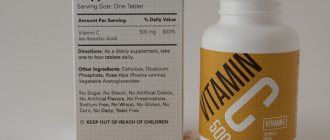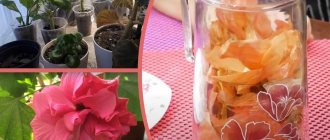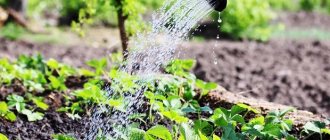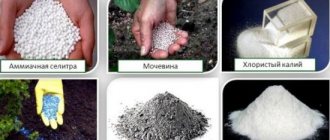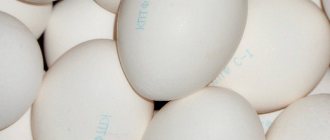You don’t know what to feed flower seedlings for growth after picking? Then you've come to the right place. We invite you to familiarize yourself with the best fertilizers, after feeding with which, seedlings of annuals and perennials will begin to grow and develop well.
In the first two weeks after picking, the seedlings have enough nutrients in the soil. During this time, the plants will take root and will need a “push” to grow. Therefore, it is better to feed flower seedlings during this period with complex mineral fertilizers or folk remedies with a predominance of nitrogen.
How can you feed
Feed the seedlings either in the morning or in the evening. The main thing is that the sun's rays do not burn, otherwise the whole process will go down the drain.
Root feeding
This feeding method involves supplying nutrients directly to the root system. Both organic and mineral fertilizers, both dry and liquid, are used here.
However, according to experienced gardeners, liquid fertilizers are better absorbed.
For treating seedlings, ready-made preparations prepared for specific crops are recommended. Fertilizer is introduced under the root; for this, use a watering can with a narrow long nose or a medical syringe without a needle. This way you can carefully feed the plant without disturbing the leaves.
Foliar feeding
If in the first case it is necessary for the solution to get into the soil, then foliar feeding is a method of pollination. The liquid composition envelops the bushes in microscopic drops, which are easily absorbed into the leaves and trunk of the sprouts. This method increases plant immunity.
Fertilizer should be sprayed so that all parts of the plant receive a “shower”. The first foliar feeding is carried out after the appearance of true leaves. The second is during the flowering period.
For foliar feeding, Energen, Zircon, Ecopin and other stimulants are used.
It is worth noting that this type of seedling treatment is effective:
- In tomatoes - if the trunks are too elongated.
- In cucumbers - as a prevention of peronosporosis.
- Cabbage acts as protection against pests.
- In flowers - if the sprouts are too stretchy.
The main thing that a gardener should remember:
The fertilizer should be diluted according to the instructions; doing it on your own can lead to disease and death of the plants.
5.Selection of soil for seedlings
For good development, the petunia root system needs loose, breathable soil. Light modern soils with baking powder, which are sold in flower shops, are ideal for this. Among all the variety, choose a universal soil - you can’t go wrong.
High-quality soil should absorb moisture well (and not form stagnant puddles on the surface), not shrink into dust, and not crack during drought. If you notice such negative reactions on the planting soil, then the best solution would be to replace it when picking. Otherwise, the seedlings will poorly absorb nutrients and, as a result, significantly slow down their growth.
cvetok-v-dome.ru
When to feed
In the first months of life, plants especially need careful care. Feeding is one of the essential conditions for good growth. Healthy seedlings have a strong trunk and leaves, and they themselves have a pleasant, cheerful green color.
Experienced gardeners read plants like a book, that is, by their appearance they can determine what the crop lacks for good development:
- Lightened lower leaves indicate a lack of nitrogen.
- Potassium deficiency results in the appearance of yellowness on the leaves, and the tips of the leaves begin to dry out.
- Lack of phosphorus - purple, bluish tints of leaves, weakness of shoots.
- The lethargy of sprouts is due to a lack or, on the contrary, an excess of sun.
If there is at least one of the signs, you need to take immediate action.
It is important to know,
that each crop requires special fertilizers, as well as special care rules.
Timing of fertilizing on the windowsill
Feeding should be done once a week, not more often. Moreover, when the plants have undergone picking, that is, they have at least two or three true leaves. Experts advise feeding small sprouts in the morning or evening, during hours when there is no sun. Moreover, the solutions are poured under the root; it is not advisable to get them on the leaves. Before fertilizing, first carry out regular watering so that the soil becomes moist.
It is recommended to alternate organic fertilizers with mineral ones if the plant is withering, but do not overwater it, otherwise it will die. If you do not have confidence in your own abilities and the ability to prepare a solution for feeding yourself, it is better to use ready-made formulations that can be bought in a specialized store.
Mistakes when feeding flower seedlings
Most often, gardeners make several basic mistakes when fertilizing:
- Feeding in the evening. Plants respond best to fertilizing done in the morning, when the seedlings are “resting” after active night growth.
- Incorrect technique. When applying fertilizers, do not allow them to fall on the leaves or stems of the plant - this can cause burns. That is why fertilizers are applied strictly at the root.
- Early application of potash fertilizers. Fertilizers containing large amounts of this substance can destroy the plant, which is in the phase of the appearance of the first shoots and active formation of the root system.
- Using the “wrong” water. The best water for diluting fertilizers is water whose composition is as close as possible to natural conditions, i.e. rain or melt, but only if it was taken in an ecologically clean area. As an alternative, you can use tap water that has been standing for several days (of course, if you are sure of its quality). If you are in doubt, it makes sense to use a filter. Please note that during the boiling process, the liquid loses oxygen and this negatively affects the seedlings.
Growing flower seedlings is a responsible matter and requires a serious approach. And additional feeding will be a real help for getting healthy plants. Follow the rules for applying fertilizers, and the result will not be long in coming!
What to feed at home
In order for seedlings to grow happily, they need high-quality nutrition - organomineral, enriched with all the substances necessary for the plant.
Mineral fertilizers
Mineral fertilizers include the following useful complexes:
- With nitrogen.
- With phosphorus.
- With potassium.
It is important to consider
that each crop needs a certain amount of nitrogen, phosphorus and potassium, so it is better to purchase ready-made balanced formulations.
Organic fertilizers
Popular organic fertilizers used for root feeding are:
- Mullein.
The slurry is diluted with water in equal parts, left for a week, and then diluted with a large amount of water.
- Green fertilizers.
An infusion is made from organic residues with water. Water at the root.
- Chicken droppings.
The droppings are poured with water and infused. Then prepare a solution for irrigation, diluting it in 20 parts of water.
- Ash.
Sprinkle soil at the roots.
Feeding with folk remedies
Experienced gardeners feed seedlings for the first time a couple of weeks after picking. In the case where the sprouts are initially planted in separate containers, fertilizing is possible when the seedlings have at least three true leaves. Fertilizing is carried out weekly, alternating various fertilizers.
Feeding is carried out:
- Ammonia.
This product contains nitrogen, which plants need for leaf growth and trunk strength. Prepare the solution as follows: take a teaspoon of ammonia per 10 liters of water. The solution is poured under the root; you can use a syringe without a needle for this.
- The shell.
Gardeners use the shell as a source of calcium, which plants need for good development. The shells are infused with water for three days (one egg shell per liter). Then the infusion is diluted with water, taking three parts of clean water to one part of the egg infusion. You can also simply grind the shells to a dusty state and sprinkle on the soil.
- Iodine.
Bacteria fear this product like fire. But the seedlings begin to grow quickly and look strong. The solution can be prepared by dissolving a drop of iodine in three liters of water. Water at the root of the sprouts. You need to try not to let the solution touch the leaves, otherwise there will be burns.
- Coffee.
More precisely, coffee grounds rich in nitrogen. The grounds must first be dried, and only then introduced into the soil.
- Brewer's yeast.
Yeast enriches the microflora and strengthens the roots of the plant. Usually, for 10 liters of water, take 100 g of yeast, a couple of tablespoons of sugar, and then leave the solution for 24 hours. The resulting fertilizer must be diluted with water (one part of the yeast solution to five parts of water). The solution is injected under the root.
- Ash.
Ash rich in potassium and phosphorus will help seedlings grow strong and healthy. You can simply sprinkle the soil with dry ash, you can prepare a solution. Hot water is used for the solution. For half a glass of ash - 10 liters of water. The solution should sit for a day. Before watering, filter the product.
- Banana peel.
It is an excellent source of potassium. The peel of a couple of bananas is finely chopped and filled with water. The solution is left for three days, then filtered. Water at the root.
- Onion peel.
Containing vitamins A, C, group B and beneficial microelements, the husk becomes a plant protection against infections. The solution is prepared as follows: a glass of husk is poured with a glass of boiling water. The mixture should sit for 48 hours. Before watering, the solution is filtered and diluted with water in the ratio: 1:3.
Fertilizer Athlete
Are the seedlings of garden flowers stretched out and weak? Feed it with Athlete fertilizer. After this feeding, the plants’ roots will begin to develop well, and the stems will stop stretching. As a result, after some time the seedlings will become strong and plump.
The solution from one Athlete ampoule is enough for 25 bushes. It is diluted in 1 liter of water and watered over the damp soil at the root, 40 ml per plant. After this, the flowers are not moistened for three days.
We have listed fertilizers that, according to gardeners, are the best for feeding flower seedlings after picking. After using them, the plants begin to grow well, do not stretch out and become plump. As a result of their weak flower seedlings, beautiful bushes are obtained that will bloom beautifully in the garden. But keep in mind that flower seedlings can be fed with nitrogen fertilizers only at the initial stage of development at home. After planting in the ground, it is recommended to use other fertilizers that are responsible for the formation of buds.
Plant nutrition
Tomatoes and peppers
Tomatoes love nutritious soil, and peppers are not far behind tomatoes in their preferences. In order for seedlings to develop well, you need to enrich the soil with fertilizers containing nitrogen.
The solution is prepared from urea (0.5 g), superphosphate (4 g), potassium salt (1.4 g) and water (1 l). Seedlings are watered only after two good leaves appear. The second time you need to fertilize after diving - with urea (a tablespoon) dissolved in water (a bucket).
Before sending the seedlings to the site, ten days before, they are again fed with fertilizers.
Important,
so that the fertilizing contains nitrogen, potassium and phosphorus.
Peppers, unlike tomatoes, must first be fed with a solution of urea, superphosphate, potassium sulfate (ratio in grams - 1: 3: 5) and two liters of water. The soil is sprinkled with ash before watering. Each time feeding is carried out, the dose of drugs is doubled. You need to feed every ten days, not more often.
cucumbers
Cucumbers need the following feeding:
- ammonium nitrate (2/3 teaspoon), potassium sulfate (2/3 teaspoon), superphosphate (tablespoon), dissolved in water (10 liters).
- urea (a tablespoon), superphosphate (1.3 tablespoons), dissolved in 10 liters of water.
- organic composition. Dilute the slurry in water (proportions 1:1) and leave for a week. Then the composition is diluted with water, taking ten parts of water for one part of the composition. This solution is poured over. Another option is to pour chicken manure with water and let it sit for a week. Dilute the composition with water for irrigation in a ratio of 1:20.
The second time, cucumber seedlings need to be fed two weeks after the formation of the second leaf.
For the solution you can use:
- A tablespoon of nitrophoska,
- A teaspoon of ash
- Three liters of water.
There is another option:
Experienced gardeners advise not to fertilize with the same fertilizers twice in a row. So, if you first fertilized with a chemical composition, then the second time you need to use organic fertilizers.
Cabbage
They also begin to feed cabbage after the first good leaves appear. To do this, take half a teaspoon of a special fertilizer, complex, with microelements, and dilute it in a liter of water. Compositions with boron and molybdenum are ideal.
Two weeks later, before picking, the soil is enriched with ash (a couple of tablespoons per bucket of soil is enough) and double superphosphate (a tablespoon). After picking, nine days after this procedure, they are fed with a solution consisting of ammonium nitrate (2 g), potassium (2 g), and superphosphate (4 g) diluted in a liter of water. After 14 days, feeding is repeated, but the solution becomes more enriched due to the doubled proportions of nutrients.
Eggplant
Eggplants will have to be fed five times, and at the root. Fertilizers with nitrogen and potassium will be required before the picking process. A little later - after picking - you will need fertilizers with phosphorus. Experienced gardeners recommend “Ideal” and “Kemira Universal” fertilizers, which are diluted with water (a teaspoon per five liters). Watering is carried out at the root, without touching the leaves. A couple of weeks after this watering, you can repeat the process, doubling the dose of fertilizer.
A good solution would be to feed the eggplants with an infusion of banana peels; this solution will enrich the soil with potassium. An infusion of potato peels is also good. The peelings are first boiled, and the plants are watered with the cooled solution.
Petunia and lobelia
Petunia and lobelia seedlings are fed with complex fertilizer. It could be Plantofol, Kemira Lux. Fertilizers should contain nitrogen, which these flowers love. You can also use “Ideal”, “Master”, “Garden of Miracles”.
Repeated treatment occurs when the plants become strong. They are fed a third time before transplanting into the ground on the plot.
Foliar feeding is also important. To maintain health, plants are sprayed with urea, potassium guamate (peat-based), aquarin, and vermicompost.
Florists need to know
that seedlings are pollinated with fertilizer, but it should not be moistened too much.
It is also recommended to feed the flowers with a solution of mullein (slurry and water in a ratio of 1:10), a liquid complex fertilizer.
Correct feeding:
- Watering with water.
- Introduction of fertilizer.
- Another watering.
- Pollination of foliage with mineral fertilizers.
How and what kind of fertilizing to apply
The peculiarity of applying fertilizers to petunia is that over time, as the seedlings grow, fertilizing is applied more and more often, bringing the frequency of applications to three times a week. As soon as real leaves appear on the sprouts, you need to spray them with a nutrient solution.
For these purposes you can use:
- urea;
- crystallon;
- "Floral aquarium".
An excellent fertilizer for petunias is “Veriohumus”. During the growth of seedlings, vitamin solutions are added to them at the root.
When the sprouts become stronger and begin to grow, they begin to be fertilized with calcium nitrate, urea or potassium. These fertilizers are dissolved in water at the rate of 10 g per 10 liters. After applying these fertilizers, the stems of the seedlings immediately become plump.
When petunia seedlings begin to bloom, they begin to apply foliar fertilizers along with root fertilizers. Petunia is carefully sprayed with nutritional compounds, trying to soak the back side of the leaves.
Many gardeners do it easier - they buy complex fertilizers for garden flowers in gardening stores. But you cannot apply purchased fertilizers to flowers without a schedule. Each type of fertilizer is applied at a certain point in the growing season of the plant.
Reviews
– I use foliar feeding of tomato seedlings - I spray it with a solution of calcium nitrate once every two weeks. My neighbor in the garden once suggested this to me. Now I don't have rot.
Margarita, Lesnoy
- And I poured saltpeter under the root, for one and a half liters of water - a third of a teaspoon of saltpeter. The result is very good, the seedlings are pleasing.
Tatyana, Krasnodar
“I know one thing: in a spoon there is medicine, in a barrel there is poison.” Same with seedlings. Everything needs to be done in small doses, carefully. And if the seedlings are already good, why all this feeding? For what? I understand that if someone dies before our eyes, then we save them. What if it’s strong? This means there is enough nutrition in the soil.
Nikolay, Revda
“My petunia was dying, I couldn’t figure out what was wrong.” Friend, take it and ask: do you feed? I haven’t heard of any supplements. I was advised to inject calcium nitrate into the root with a syringe. Saved me!
Elena, Pskov
– My seedlings have stretched out. I tried to save him with the help of Energen, but to no avail. They recommended “Athlete” and the results were immediately noticeable. They also recommended me a good way to feed it: dilute half a packet of yeast in a bucket, let it ferment and water it. The seedlings have recovered.
Evgeniy, Sysert
In order for the sprouts to form correctly into a healthy adult plant, you need to take care of feeding with the necessary fertilizers. It is important to take into account the “tastes” of each culture and the process algorithm. Then the seedlings will grow strong and strong.
Health to you and your loved ones! Natalya Belokopytova.
Caring for petunia seedlings |
Petunia shoots appear from seeds in the form of small blades of grass on thin stalks. They are too delicate and any error in care immediately affects their development. Mass death of seedlings is very often observed among amateur flower growers, who seem to be caring for the seedlings correctly, but in some way make a minor mistake. And it is precisely this that becomes fatal for young shoots! Therefore, when growing seedlings, especially for the first time, you need to pay attention to all the little things that may seem insignificant. Caring for petunia seedlings is not difficult, but it requires care.
The amount of watering of tomatoes from sowing to picking
Watering tomatoes at different periods of seedling development will differ. Before sowing seeds in the ground, you need to be able to properly carry out the preparatory work. The optimal moisture content for planting soil is considered to be 85-95%. To check the readiness of the soil, you need to take a handful of soil from a depth of 10-15 centimeters and squeeze it into a ball. If a lump forms when pressed and easily disintegrates after pressing, this is the optimal soil for planting.
When the soil has low moisture levels, tomato seeds will not receive the life-giving force to germinate. Most often, inputs do not appear for a long time. When tomatoes are left without watering for a long time, their root system suffocates and the plant disappears.
But in the case when watering a tomato is organized more than normal, the roots suffer from a lack of oxygen and also suffocate.
In order for the vegetable to develop correctly, the following rules must be followed:
- How to water tomatoes after planting in the ground? It is necessary to water every 2 days to prevent the top layer from drying out after the previous watering of the tomato. Many gardeners recommend using light irrigation or spraying to avoid pressing the soil, which will make it difficult for the sprout to reach the surface.
- As soon as the first shoots appear on the surface, they need to be watered every 3 days . The best option is to irrigate the soil with sprayers.
It is worth remembering that tomatoes quickly get used to a certain regime, which makes caring for them easier. When the seedlings begin to grow stronger, you need to water the tomato seedlings as needed: do not overwater them or let them dry out. It is during this period that irrigation should be carried out.
As soon as the tomatoes grow, they need to be picked. After planting tomatoes, they should not be watered for 4-5 days. Next, water the tomato once every 8-10 days.
Experts advise irrigating the soil through pallets in the first days after the dive. This approach is optimal for good tomato rooting, since the roots will reach for moisture.
The best fertilizers with potassium for feeding seedlings
Maybe not everyone knows that potassium helps seedlings absorb carbon dioxide from the air, it stimulates the production of sugars, and helps plants acquire immunity. With a lack of potassium, chlorotic spots appear on the lowest leaves of seedlings; if new leaves are formed, they are much smaller than the size required for the crop, and their edges, even on young leaves, may already have rust.
To eliminate potassium starvation of seedlings, the following fertilizers are used: potassium sulfate or potassium sulfate (up to 50% potassium), potassium magnesium or potassium and magnesium sulfate (up to 30% potassium), potassium monophosphate (up to 33% potassium) and potassium nitrate (up to 44% potassium ).
It is most appropriate to fertilize plants for the first time with substances containing potassium after the seedlings have formed two or three leaves. During this period, you can dilute approximately 8-9 g of monophosphate in a bucket of water and use this amount per square meter of nursery. You can re-apply potassium fertilizers a week after picking or even after planting the plants in a permanent place in the soil or greenhouse; the fertilization rates can be increased by one or one and a half grams.
Seedlings, what do you need?
Nitrogen plays a significant role in the formation of the above-ground parts of plants . It is this macronutrient that ensures active growth and the rich green color of the leaves. Enough nitrogen means the seedlings of tomatoes, peppers and other plants look plump, vigorous and strong. But you shouldn’t overfeed either - the plant will begin to fatten, increasing green mass, instead of forming ovaries and producing fruit.
In addition to nitrogen, young plants need a number of other substances: phosphorus, potassium, manganese, iron, boron, copper, zinc, molybdenum, calcium . And, in order not to rack your brains about what specific substance the plants lack, the easiest way is to fertilize them with a complex mineral fertilizer. And the plants themselves will take from the soil what they need. And if you still want to get to the truth, why your plants look this way and not otherwise, a hint sign will help
Based on a number of signs, you can calculate exactly what element the plant needs and, based on this, formulate fertilizing.
Table: Signs of a lack of macro- and microelements in growing seedlings:
Micro-, macroelement
Functions
Feeding stages for good growth
Petunias are very voracious in terms of fertilizers. If you want to have blooming clouds of petunias all summer, you need to be prepared to constantly apply fertilizer.
First feeding
The first feeding of petunia should begin before planting the seeds in the ground. To do this, the soil is treated with a fungicide. After this treatment, petunias are not afraid of black leg.
Before the pick
Once the first shoots appear, it is important for them to maintain good lighting, temperature and humidity. If all conditions are met, then the seedlings need nothing more. But if one of the listed phases is disrupted, the plant must be sprayed with immunostimulants:
- Epin;
- Zircon;
- NV-101.
This feeding will help petunia seedlings withstand unfavorable conditions.
Important! Petunias, both seedlings and adult plants, need to be fed with macro- and microelements and vitamins at least twice a month.
After the pick
At the seedling stage, fertilizers also need to be applied. After the first two pairs of strong leaves appear, the seedlings should be transplanted into larger containers or individual cups. It is at this time that the first fertilizing is applied. A little universal fertilizer or fertilizer containing phosphorus is poured under the root.
In order for the seedlings to take root and take root faster, the plantings need to be slightly shaded for a couple of days.
A week later, if no troubles occurred with the seedlings, the relocation was successful, you need to feed them with nitrogen-containing fertilizer leaf by leaf. That is, spray fertilizer on young leaves from a spray bottle with small holes.
After 10 days, you can do another fertilizing with nitrogen. Then you should switch to potassium fertilizers for petunias. Alternating potassium and nitrogen-containing preparations will give a good result. At this time, and at any other time, the main thing is to prevent excess moisture. Before planting in a permanent place, they give very little phosphorus.
Also, immediately after picking, the plant requires preventive treatment against pathogenic microorganisms and fungi.
The following are well suited for these purposes:
- Potassium manganese solution;
- Phytosporin solution;
- Energen solution.
It is best to spray fertilizers over the surface of the soil and the lower parts of the plant from a spray bottle. This way the roots of the petunias will not be harmed.

